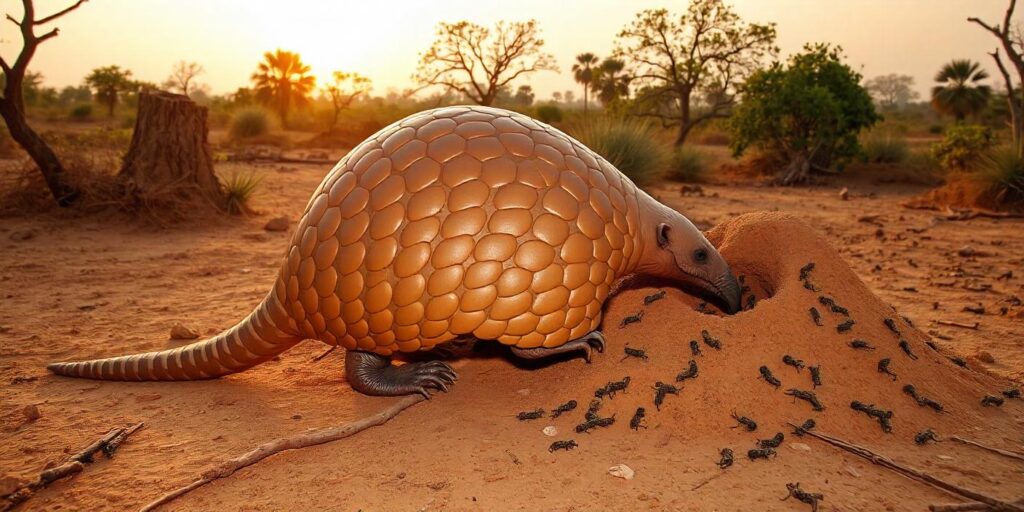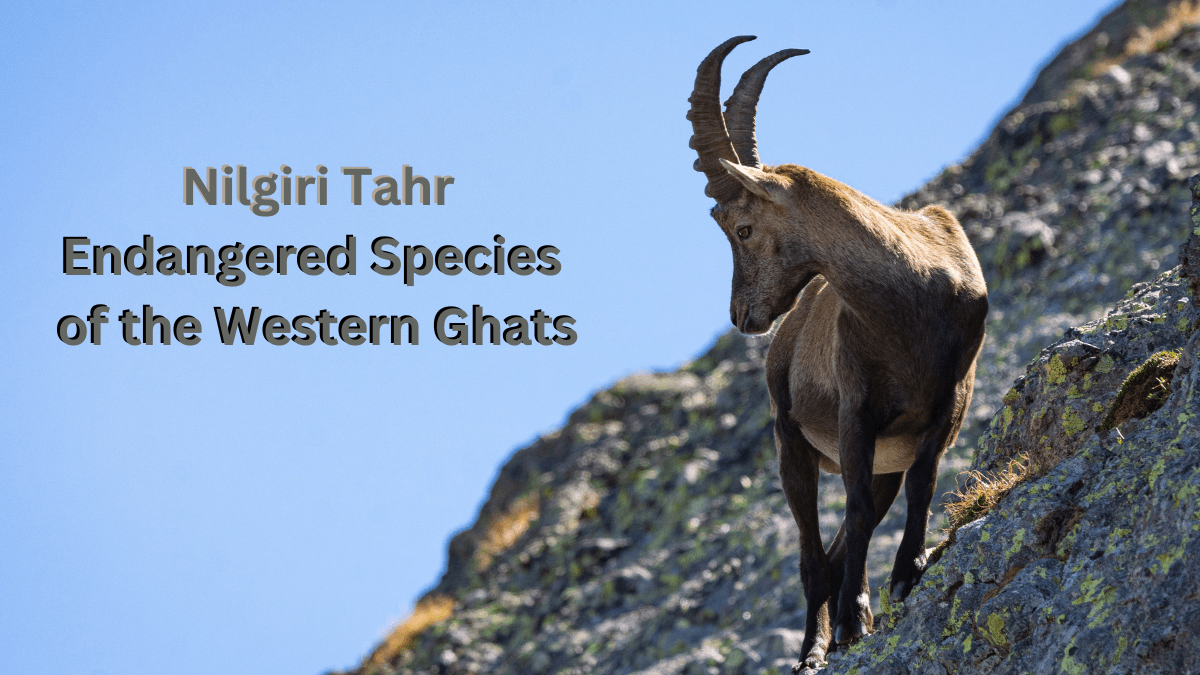The Indian Pangolin: A Detailed Exploration of One of Nature’s Most Fascinating Mammals
The Indian pangolin (Manis crassicaudata) , is a rare creature that is indigenous to the Indian subcontinent. This pangolin species is one of the eight identified pangolin species worldwide. They are all differentiated by having unique bodies coated in rough, overlapping scales. Indian pangolins are classified as endangered due to serious threats to their interesting biodiversity. We will explore deeply the world of the Indian pangolin in this piece, discussing topics including habitat, habits, conservation status, and initiatives to save this amazing animal.
Are Pangolins Found in India?
Yes, pangolins are found in India, with the Indian pangolin being one of the two species present in the country. They inhabit various regions across the Indian subcontinent, including forests, grasslands, and even agricultural areas. Indian pangolins are nocturnal and highly elusive, often spending their days hidden in burrows to avoid predators and human threats. The presence of pangolins in India is crucial for maintaining ecosystem balance, as they help control insect populations by feeding predominantly on ants and termites.
Despite their essential role in the environment, Indian pangolins face serious challenges. Widespread poaching for their scales, along with habitat destruction, has drastically reduced their populations in India and beyond.
Understanding the Indian Pangolin
The Indian pangolin is a medium-sized animal whose extended body is covered in thick armor-like keratinous scales. The pangolin employs its scales, which account for most of its weight, as its main line of defense. The pangolin’s toughened scales make it nearly impossible for predators to bite through them when they roll into a tight ball in response to danger.
The Indian pangolin is a mammal, despite its appearance suggesting it belongs to the reptile family. Its long, sticky tongue, which may reach well beyond the length of its mouth, is used to devour termites and ants, which make up the majority of its meal. Because of its unusual eating patterns, the pangolin is a significant ecological agent that helps regulate insect populations in its natural habitat.
Indian Pangolin Habitat: Home to a Nocturnal Forager
The habitat of the Indian pangolin extends across a range of ecosystems in South Asia, including forests, grasslands, and even agricultural lands. These nightlife creatures are adept diggers, using their powerful claws to excavate burrows where they take shelter during the day. These burrows can be quite large and deep, providing a safe refuge from predators and environmental threats.
Since termites and ants make up the majority of the Indian pangolin’s diet, it favors environments with a lot of these insect colonies. Despite being mostly found in the wild in India, Sri Lanka, Nepal, and some areas of Pakistan, habitat degradation and human activity have caused a dramatic drop in their population.
Key Facts about the Indian Pangolin
The Indian pangolin is an extremely skilled feeder that uses its sense of smell to find termite and ant mounds. The pangolin has the ability to remove termites and ants from their burrows and mounds with its long, sticky tongue. Key information regarding the Indian pangolin is as follows:

- Size: The Indian pangolin can grow up to 75 cm in length, with males typically being larger than females.
- Scales: The scales are made of keratin, the same protein found in human nails and hair.
- Defense Mechanism: When threatened, the pangolin rolls into a ball, using its sharp-edged scales as a deterrent to predators.
- Reproduction: Female pangolins give birth to a single offspring after a gestation period of approximately 140 days.
- Lifespan: In the wild, they can live for up to 20 years, but their lifespan is often shortened due to human activities.
The Endangered Status of the Indian Pangolin
The Indian pangolin is listed as endangered on the IUCN Red List due to extensive poaching and illegal trade. Their scales are highly sought after in traditional medicine and for ornamental purposes, particularly in parts of Asia. Additionally, habitat loss due to deforestation and agricultural expansion has further exacerbated their decline.
How many Indian Pangolins Are Left in the World?
Conservationists estimate that pangolin populations have plummeted by more than 50% over the last few decades. Due to their isolated and reticent lifestyle, the official count of Indian pangolins remains undetermined. Pangolin populations, however, are reported to be dropping by the International Union for the Conservation of Nature (IUCN) Red List of Endangered Species.
This alarming decline has prompted governments and conservation groups to implement stringent measures aimed at protecting these animals. However, despite being listed under Schedule I of the Wildlife Protection Act of India, which provides the highest level of protection, illegal trafficking continues to be a major threat.
Why Are Indian Pangolins Poached?
The Indian pangolin is one of the most trafficked animals in the world, along with pangolins generally. The main cause of this is the demand for their scales, which are used in some traditional medical procedures and are said to have therapeutic qualities. Their meat is also prized as a delicacy in some Asian countries, encouraging illegal trade.
In many instances, hunters capture pangolins using traps or dogs and sell them on the black market. The high value of pangolin scales has created an illegal trade network, making it difficult to eradicate poaching entirely. However, ongoing conservation efforts aim to curb this practice through stronger law enforcement and public awareness campaigns.
Conservation Efforts to Protect the Indian Pangolin
- Anti-Poaching Initiatives: Authorities have ramped up anti-poaching measures to curb illegal hunting and trafficking of pangolins. These efforts are coupled with stricter penalties for those caught trading in pangolin products.
- Habitat Restoration: Conservation groups are working to restore degraded pangolin habitats, particularly in areas affected by deforestation and agricultural expansion.
- Public Awareness Campaigns: Educational programs are being conducted to inform local communities about the importance of pangolins in maintaining ecosystem balance and the legal consequences of poaching.
- Research and Monitoring: Ongoing research is being conducted to better understand the behavior, ecology, and population dynamics of the Indian pangolin. This data is crucial for developing effective conservation strategies.
The Role of Pangolins in the Ecosystem
Pangolins, including the Indian pangolin, play a vital role in maintaining the balance of ecosystems. As insectivores, they help control populations of ants and termites, which can otherwise become pests. Their digging behavior also contributes to soil aeration, which promotes plant growth and enhances the health of their habitats.
Furthermore, pangolins are indicators of healthy ecosystems. Their presence suggests a robust insect population and a well-functioning habitat. The decline in pangolin populations can signal broader environmental problems, such as deforestation and the overuse of pesticides, which may have far-reaching consequences for other species as well.
What Can Be Done to Save the Indian Pangolin?
The survival of the Indian pangolin hinges on a multi-faceted approach that addresses both the direct threats to the species and the broader environmental challenges they face. Here are some actions that can be taken to protect these endangered animals:
- Strengthening Wildlife Laws: Governments need to continue enforcing strict wildlife protection laws and crack down on illegal wildlife trade networks.
- Supporting Conservation Programs: Financial and logistical support for conservation programs is essential. This includes funding for research, habitat restoration, and community engagement initiatives.
- Promoting Sustainable Agriculture: By encouraging sustainable farming practices, we can reduce the destruction of pangolin habitats.
- Global Collaboration: International cooperation is needed to tackle the illegal trade in pangolins. This includes cross-border enforcement, intelligence sharing, and joint conservation efforts.
The Indian pangolin is an extraordinary creature, with its unique defense mechanisms and specialized diet making it a key player in the ecosystems it inhabits. However, the species faces numerous threats, from habitat loss to illegal poaching, which have driven it to the brink of extinction. Conservation efforts, public awareness, and stronger enforcement of wildlife laws are crucial to ensuring the survival of this endangered species.
If we want future generations to witness the beauty and ecological importance of the Indian pangolin, immediate action must be taken. With the support of governments, NGOs, and local communities, it is possible to turn the tide for this remarkable mammal.
Discover more from Bhuchi's World
Subscribe to get the latest posts sent to your email.














Post Comment